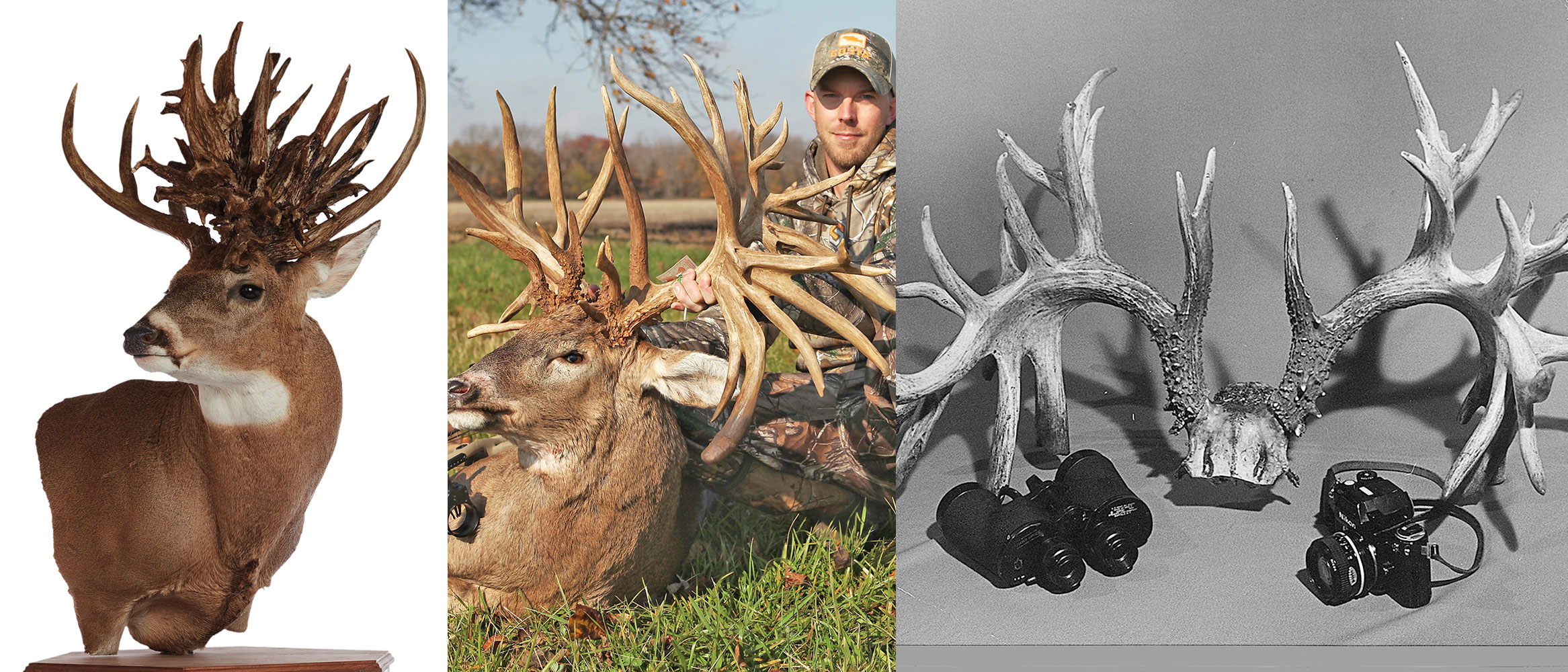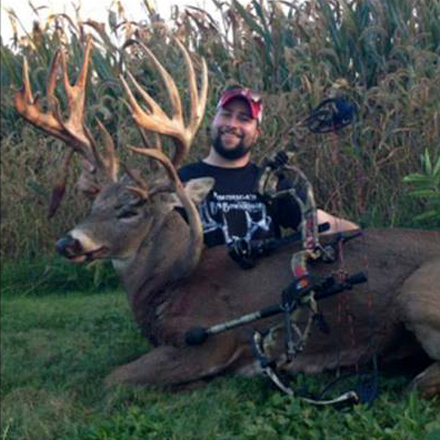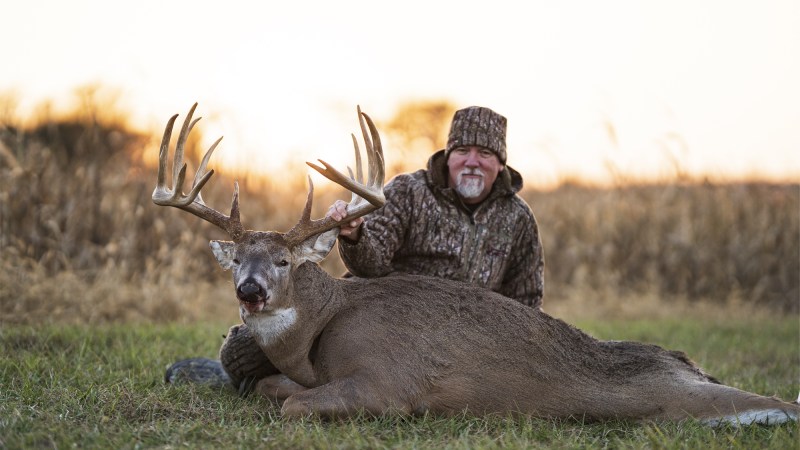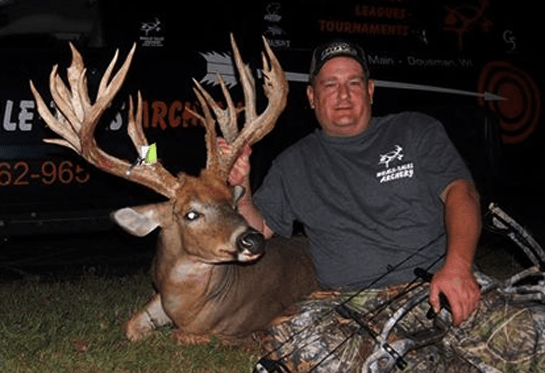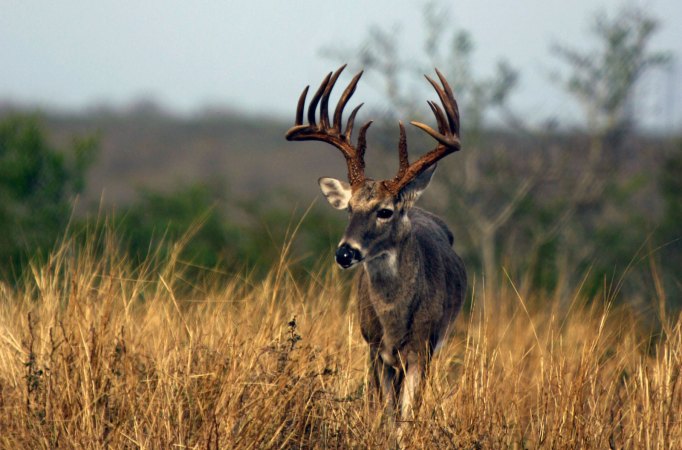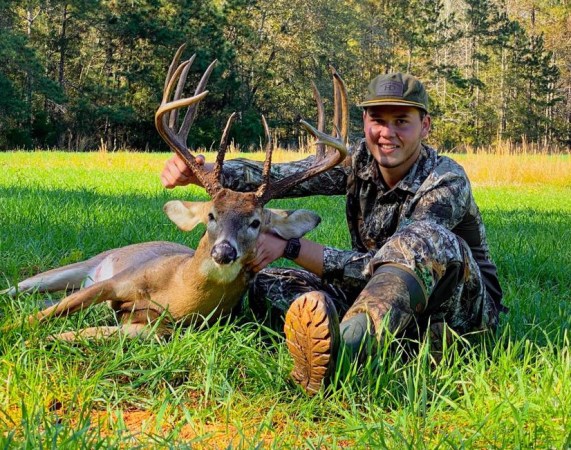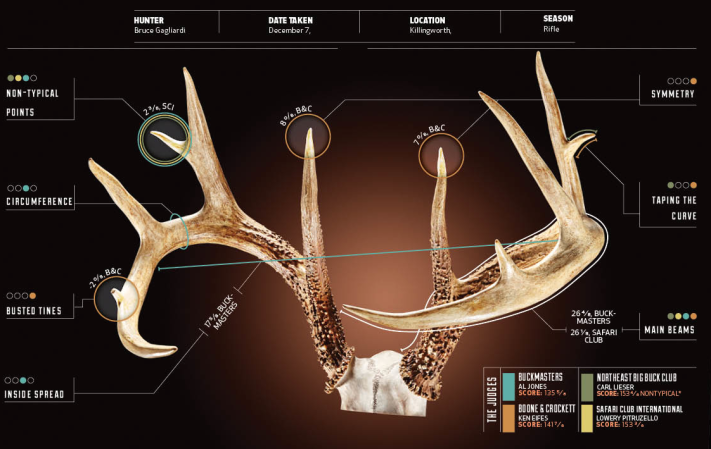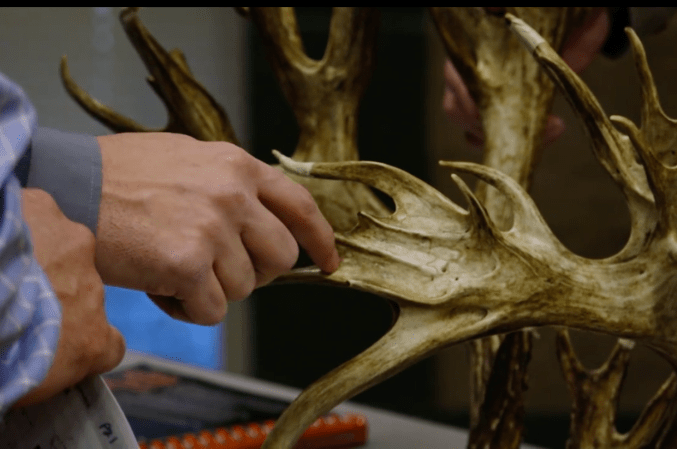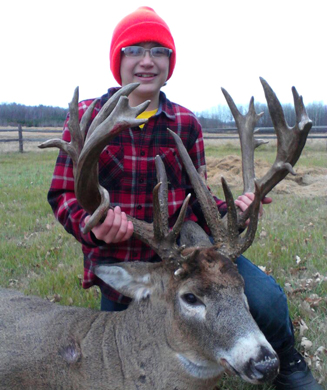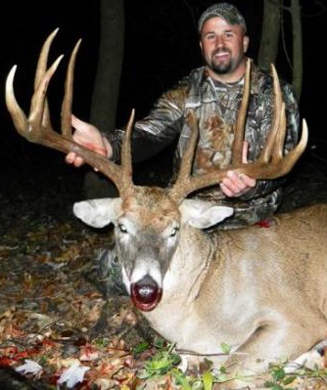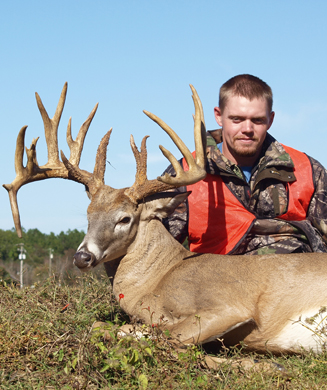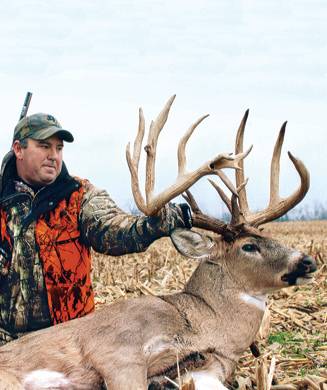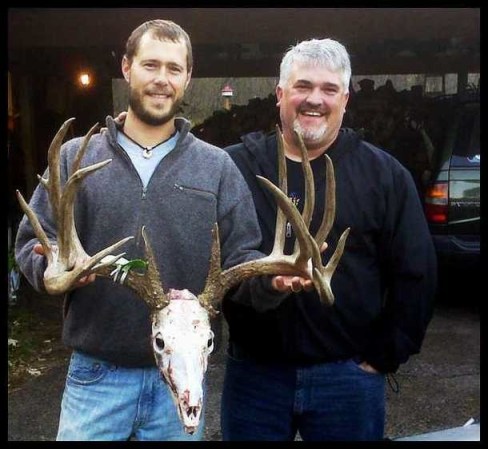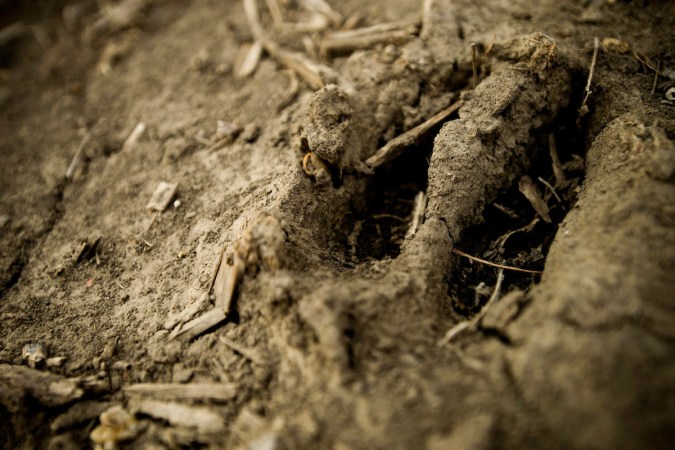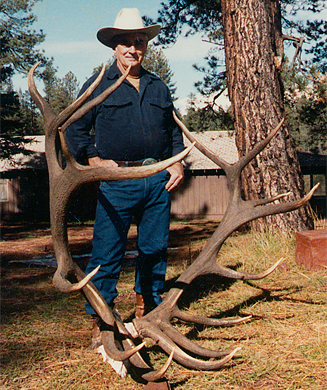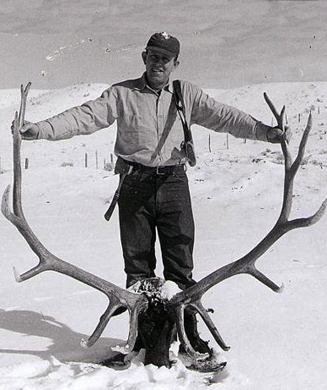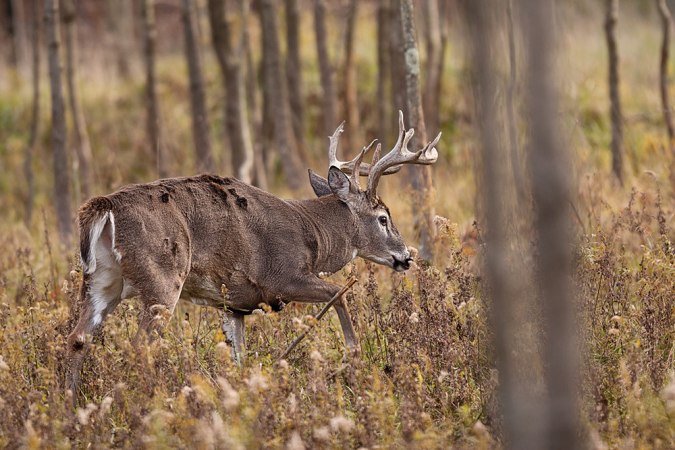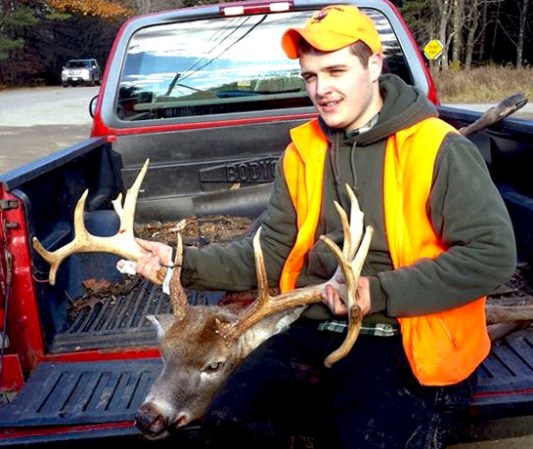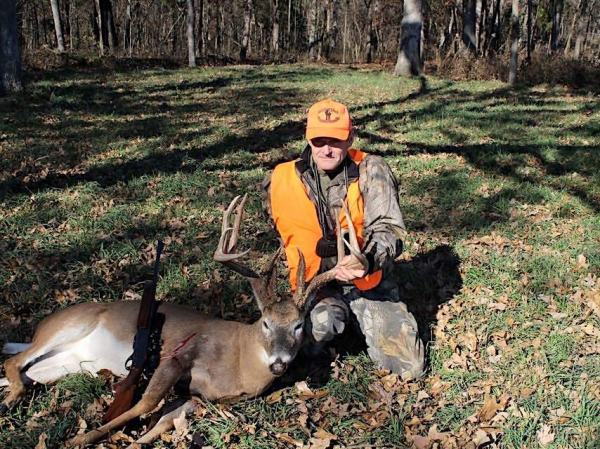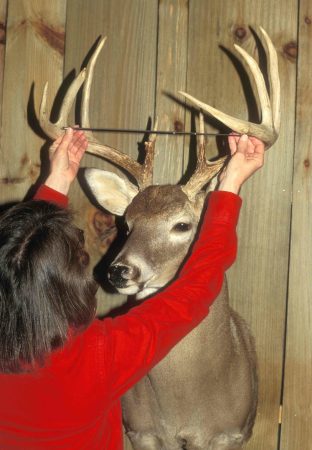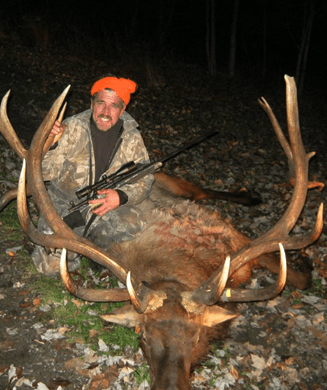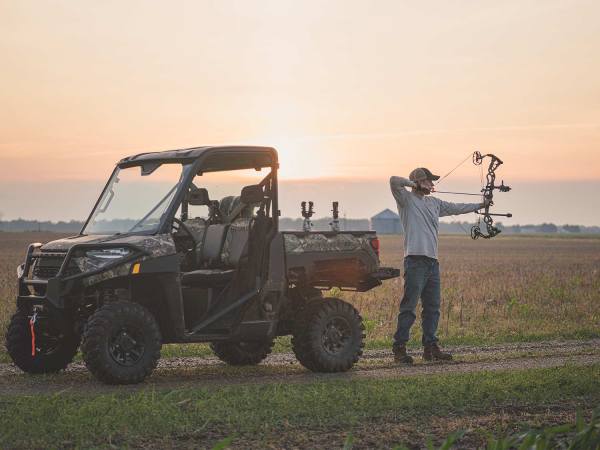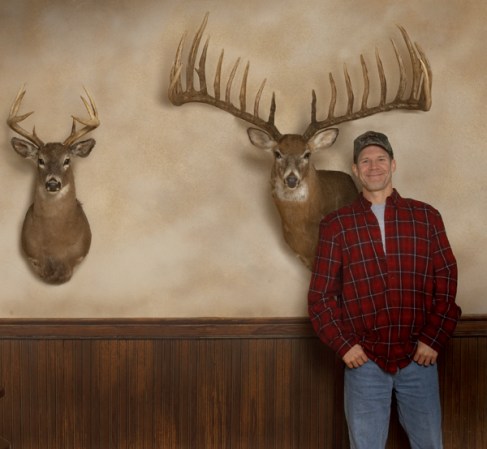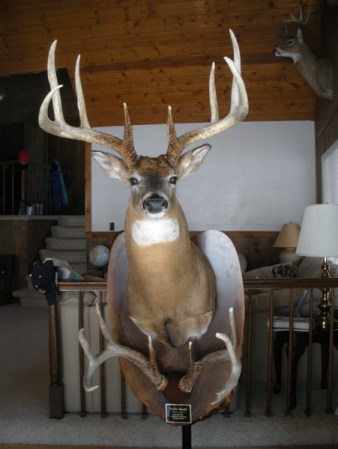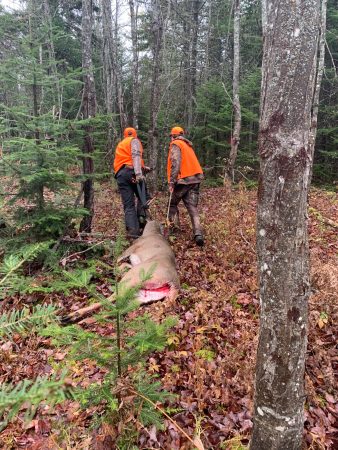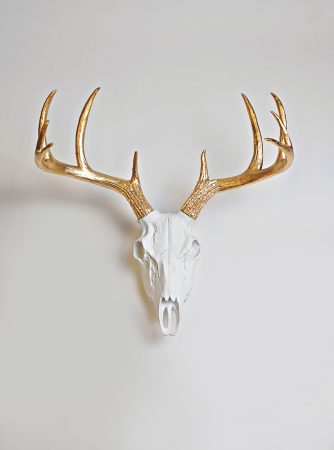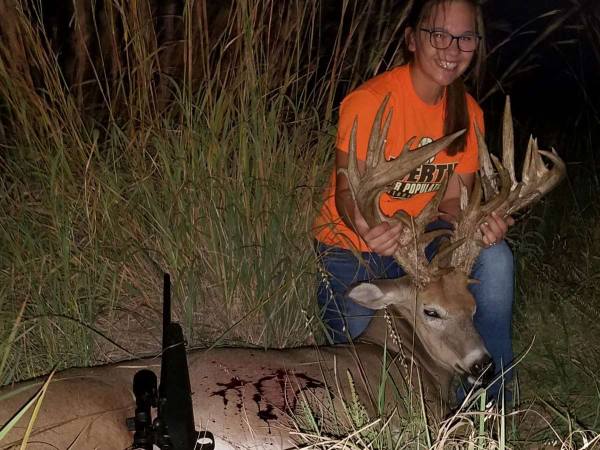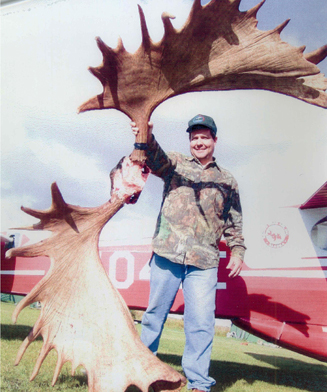The Boone and Crockett Club has compiled big game records since 1932, when they published the first copy of Records of North American Big Game. These records are not for chest-thumping bravado but to keep tabs on and indicate potential trends in North American big game populations. One eyebrow-raising trend that we can glean from the records deals with nontypical whitetails and why, every few years, a new trophy breaks into the top 10.
After digging into those records, the reasons as to why we’re seeing more giant nontypicals top the record books remain as mysterious as nontypical racks themselves.
Nontypical antlers are complicated. Biologists spend their entire careers trying to understand what causes them. The best available science indicates that several factors cause nontypical antlers: genetics, hormones, bodily injury or injury to the antler while it’s in velvet, disease, parasites, and environmental factors—which could be an even longer list.
“Research shows that in most cases, something detrimental happens to the antlers causing them to become asymmetrical,” says Jon McRoberts, a research scientist in the wildlife biology program at the University of Montana. McRoberts came to that conclusion after conducting a literature review of 86 books, symposia, and peer-reviewed literature on bilateral asymmetry in antlers (that’s “nontypical” to the rest of us).
Recent Nontypical Record Bucks
First, let’s crunch some numbers from the records. Of the top 10 nontypical bucks killed by hunters, all but one have been killed in the past 20 years (the top three killed by hunters were all taken within the last five years). The outlier is Jerry Bryant’s stud from Fulton County, Illinois, which he killed in 1995.
Now, consider the same stat for typical whitetails. Only three of the top 10 hunter-killed typical bucks have been killed since 2000. Of the top 20 typicals, only five have been killed since 2000. Take the Hanson Buck, for example. It has stood as the number-one biggest typical whitetail buck for almost 30 years.
With these numbers, you might think there are more nontypical deer on the landscape, but that’s not necessarily the case. Since 2000, typical whitetail deer record-book entries meeting the minimum entry requirement have consistently surpassed nontypical entries. In some years, typical entries have doubled the number of nontypical entries.
So what gives? This is as far as anyone in the records department at the Boone and Crockett Club is willing to officially go: “Yes, there is a trend there, but we don’t know what causes it.”
But conversations held on background lead to more interesting ideas. Namely, there are several potential reasons for this record-book trend, and most of those reasons have to do with hunters, not the deer.
First, modern-day hunters are more likely to enter their buck into the records. In the 1970s and ‘80s, most hunters didn’t give a rip about antler score. It was all about the weight. In 1970, hunters entered a total of 65 whitetails into the Boone and Crockett records. In 1980, they entered 73. In 1990, that number jumped to 305. And in 2012, entries reached a peak of more than 800. It’s also possible that hunters even farther back in history put less value on nontypical racks than we do today. In fact, when the records were first established, there wasn’t a nontypical category. It wasn’t until 1950 that a separate category for nontypical racks was added to the records.
Second, modern hunters want bigger deer. Because of hunter input, states like Indiana have instituted a “one-buck rule.” As you may have guessed, hunters in states with this rule can only kill one buck, versus first shooting a young meat buck and then looking for a mature one. Somewhat surprisingly, Indiana has become the top trophy whitetail state in recent years.
Even without additional rules or minimum antler-point restrictions, hunters are pickier today. When you read about the Brewster Buck below—the biggest nontypical buck ever killed by a hunter—you’ll see that the hunters watched that buck grow every season thanks to trail cams around the farm. When a buck like that shows potential, letting it grow is akin to gambling. Will it survive until next season? If it does, how much bigger will it be? If a buck is going to grow to five or six or seven years old and grow a massive nontypical rack, a hunter (or several hunters) will have to be willing to pass on him when he’s three.
Also, prime food sources are key when you’re trying to grow more than 300 inches of antler in a few months. And today, we create great habitat for big deer. The top bucks come from agricultural states, but serious whitetail hunters are also managing for native forbs (which are key to antler growth), practicing timber stand improvement, and planting food plots.
So, what’s the recipe for a record-breaking nontypical buck? Take a region that has perfectly managed habitat, add a deer that’s allowed to full reach maturity, toss in genetics and environmental factors that contribute to nontypical antlers, and you have a potential world-beater. Will this trend of bigger nontypical bucks continue? No one is quite sure. In the meantime, here are the stories behind the biggest nontypical whitetails ever entered into the records, until a bigger one turns up.
The Brewster Buck
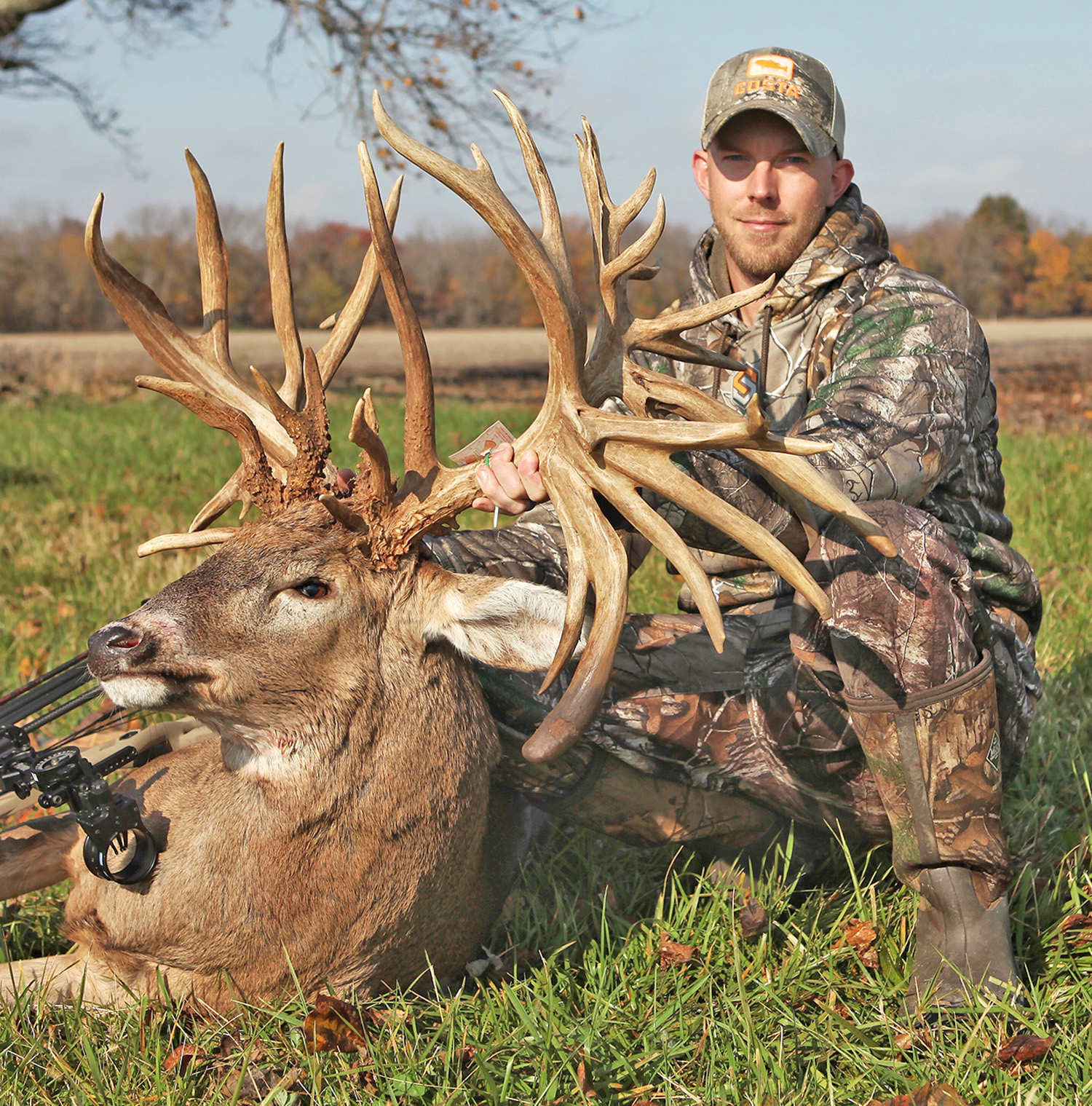
Score: 327-7/8
Location: Edgar County, Illinois
Year: 2018
Virginia hunter Luke Brewster is what the hunting world today likes to call an adult-onset hunter. Brewster grew up fishing, not hunting. His dad, though, did like to chase deer with a muzzleloader. After serving in the Marine Corps in Afghanistan, Brewster returned to his old fishing spots, and friends got him into deer hunting. Eventually, he gravitated toward bowhunting. At first, he killed a couple of does, then shot his first archery buck in 2017, a 2.5-year-old 10-pointer.
Brewster’s dad had a 40-acre farm in Illinois. A farmer leased the property, and Luke met the farmer’s sons and sons-in-law who hunted it. The guys hit it off immediately. They showed Brewster around the farm, gave him bowhunting tips, and most importantly, showed him trail camera photos of a buck growing up before their eyes.
The trail cameras often picked up one particular buck in 2014. By 2016, “Mufasa” as it had been named, had grown into an absolute stud shooter buck. In 2017, one of the hunters took a shot at Mufasa, but his arrow was deflected by a branch, resulting in a clean miss. Mufasa wasn’t seen the rest of the year.
In 2018, Brewster joined the boys on the farm for an early-November hunt. He climbed into a stand that hadn’t been hunted much. After sitting for four hours, Brewster watched two does approach the stand. They were jittery, and for good reason. In came Mufasa, headed for a scrape only 26 yards away. Brewster quietly drew his bow and released. The buck bounded away. After waiting 30 minutes, he climbed down from his stand and found Mufasa piled up only 40 yards away.
“Everyone was just as shocked as I was,” Brewster told Outdoor Life. “The first thing they did [when they came to see the deer] was give me a big hug… It was exciting to put down a deer of that magnitude, but it was pretty sad, as well. Not just for the guys who didn’t put their tag on it, but for me as well, because we all knew that we weren’t going to be getting that excitement every year of chasing him.”

According to the Boone and Crockett score chart, the buck has 39 scorable points and a total of 186-4/8 inches worth of abnormal points. With a gross score of 337-1/8 points and a final score of 327-7/8 points, the Brewster Buck is officially the Pope and Young World Record non-typical whitetail and the largest hunter-killed buck in the Boone and Crockett Records.
Butcher Buck
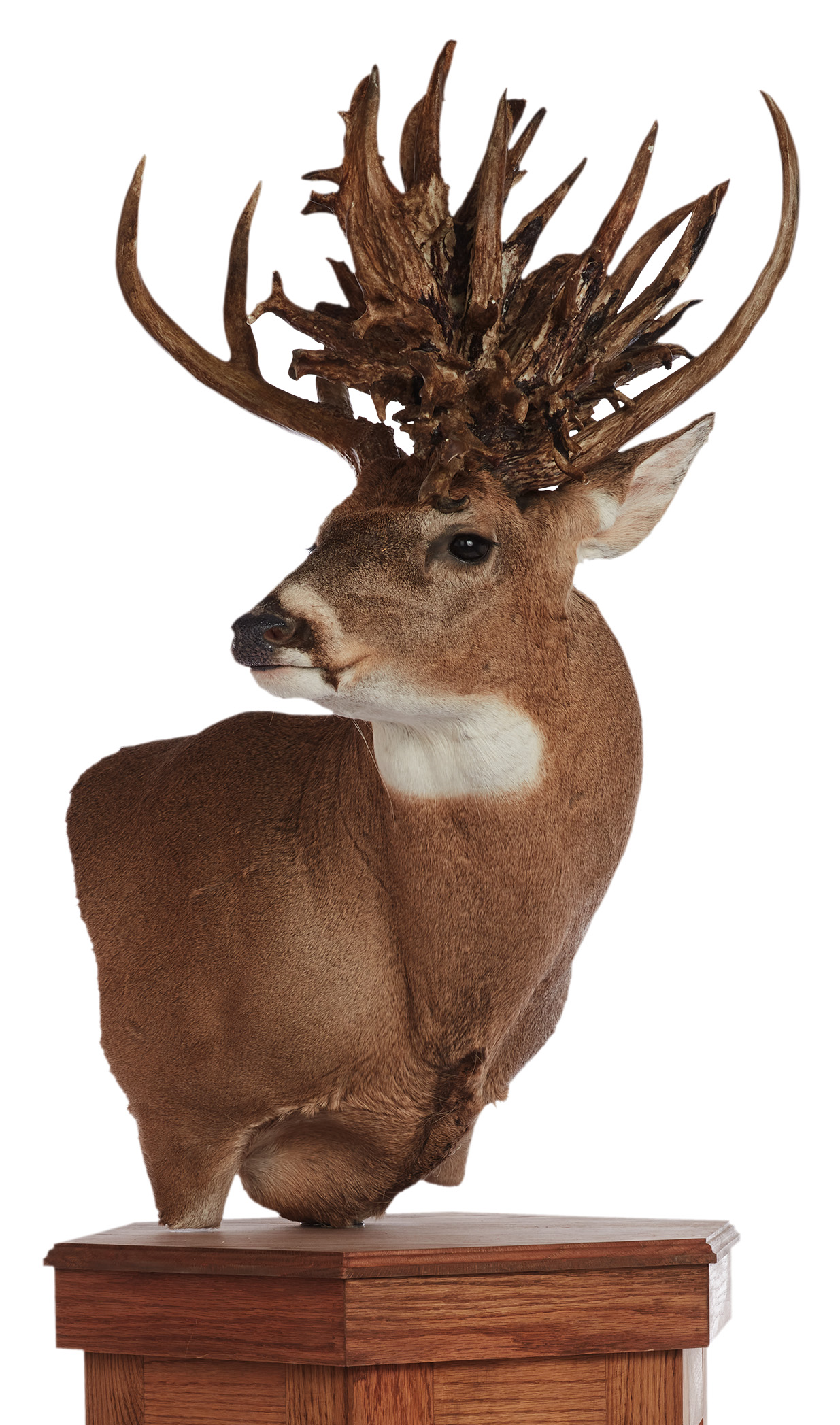
Score: 321-3/8
Location: Chase County, Kansas
Year: 2019
With three points on the right antler and a whopping 64 points on the left, this deer will make any hunter do a double-take. Somehow, Brian Butcher was able to keep his composure on this Chase County, Kansas monster.
In April 2019, Brian Butcher’s trail camera captured a photo of this buck, but it was too early to tell what it would grow into. In early October, the two would cross paths again. On October 11, Butcher and a friend went to trim shooting lanes where they had recently hung a treestand. Walking into the spot, they bumped a few deer. After 30 minutes of cutting, his friend left, and Butcher climbed into the stand, hoping to get a feel for the area.
Butcher got settled, and not 15 minutes later, a small buck showed up to browse. An hour later, another buck came in. This time it was a nine-pointer. Eating the leaves from the freshly trimmed limbs, the buck walked around the base of Butcher’s stand for about 30 minutes. A short while later, two more bucks came into view, and the hunt got interesting.
The first buck was small, but the second buck “looked like there was bailing twine or a small bush caught in his antlers,” Butcher wrote for a story in the Boone and Crockett Club’s 31st Big Game Awards book. Like Medusa of Greek mythology, the buck paralyzed Butcher. He couldn’t stop staring at the antlers trying to figure out what was going on with that headgear. He brought himself back to reality and focused on the buck’s vitals. At 25 yards, the buck presented Butcher with a shot. His arrow zipped through both lungs.
Excited, Butcher only managed to wait about 10 minutes before climbing down from the stand. He found fur at the point of impact. A few feet away, he found his arrow covered in frothy blood. “My confidence was climbing as I picked up the blood trail and followed the red carpet for about 35 yards,” he recalled. “There he was. I took in the moment while thinking, what in the heck is this thing?”
It turns out “that thing” would take measurers five hours to score. According to the Boone and Crockett score sheet, the buck has 245-1/8 inches of abnormal points and a gross score of 343-4/8 points. The final net score is 321-3/8 points, making it the largest whitetail recorded in Kansas. The second-largest Kansas buck scores more than 20 points less than the Butcher buck.
Tucker Buck
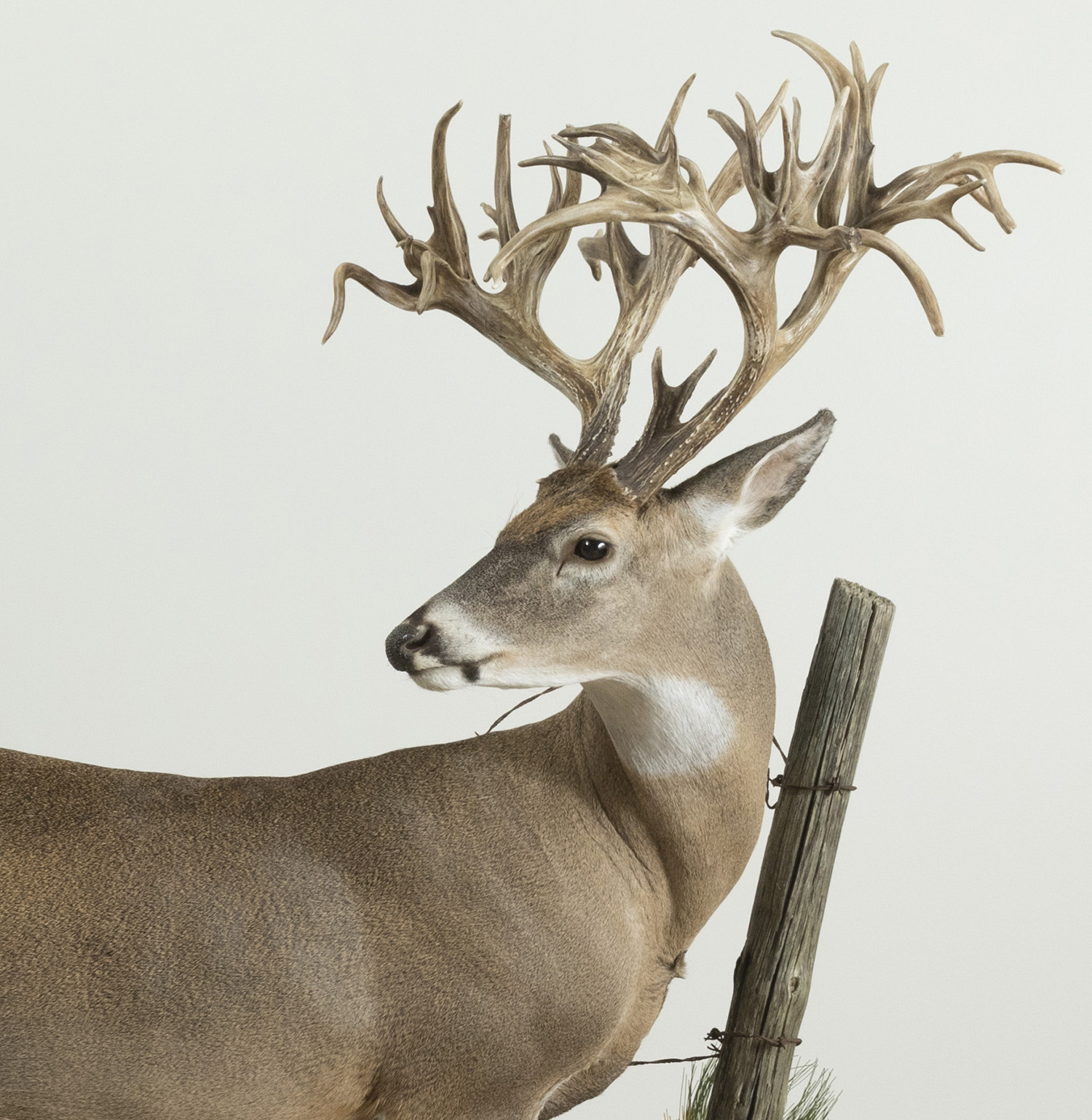
Score: 315-1/8
Location: Sumner County, Tennessee
Year: 2016
Few hunters get second chances on a buck like this. Stephen Tucker is one of the few. In September of 2016, Tucker was driving a tractor back to the farm when he got a call on his cell phone. It was his uncle right behind him. He excitedly told Tucker to check out a buck coming straight at him. At first, Tucker thought the buck had a bunch of corn husks stuck in its antlers. It turns out that was all-natural headgear. He’d never seen that deer on the farm before.
Borrowing one trail camera and buying another, Tucker was soon on a mission. He captured the buck on camera a few times, and he decided to hunt the buck during Tennessee’s November muzzleloader season. On the opener, he crawled into his hunting blind well before dawn. Like clockwork, the buck appeared at his scrape. Tucker aimed and squeezed the trigger. The primer went off, but that was it, no boom. The buck looked over, but it didn’t spook. Tucker spotted the buck again in the afternoon, but it was beyond his effective range.
On Monday morning, he returned to the blind. Sure enough, the big buck returned too, and he was only 40 yards away. This time when Tucker pulled the trigger, smoke filled the blind. The buck ran into a thicket. After waiting an hour, he and his brother-in-law found just a little blood, then a lot of blood. Then they saw what the largest hunter-killed buck at the time (until Brewster killed his Illinois giant.)
Missouri Monarch (Number 1 Picked Up)
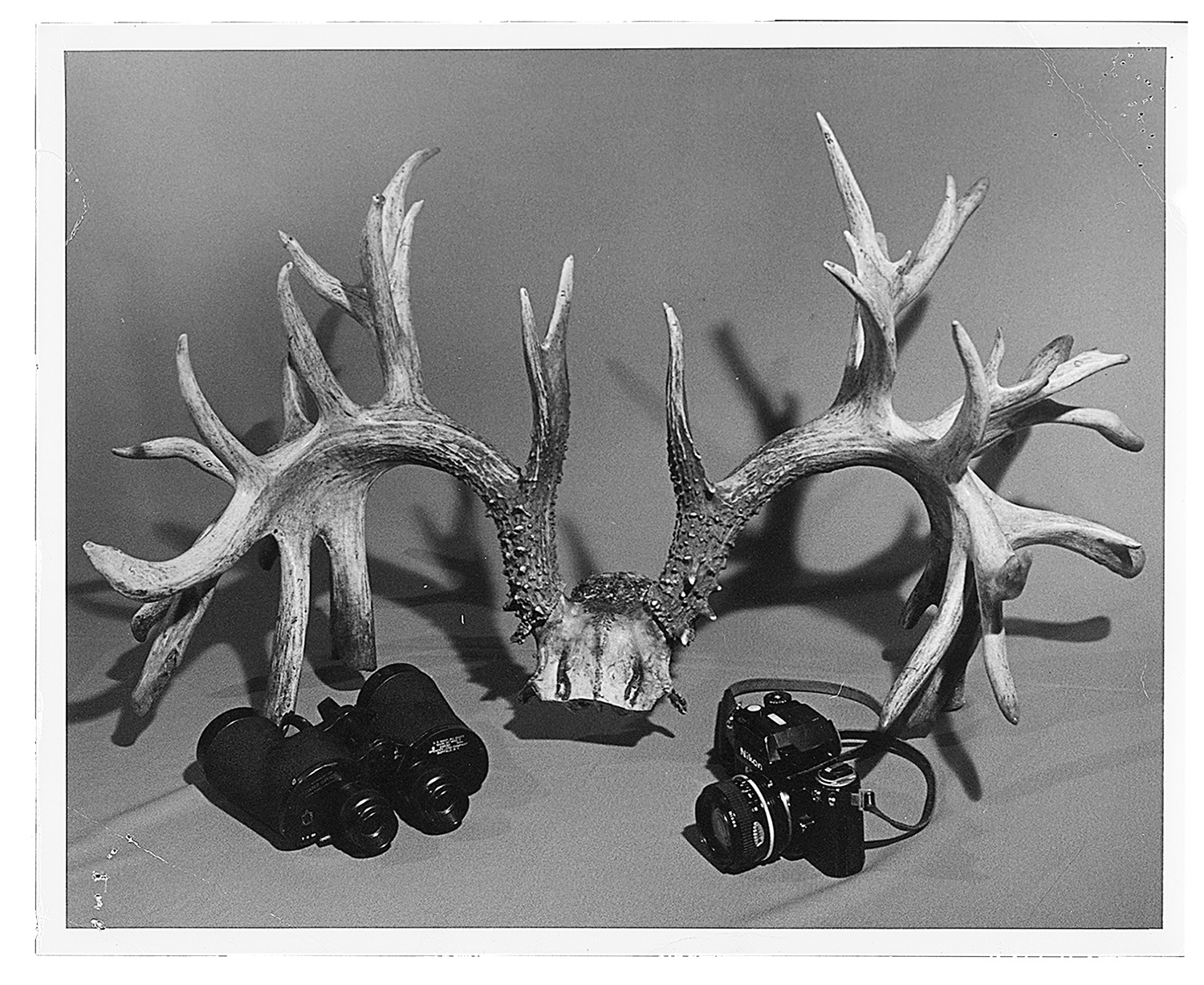
Score: 333-7/8
Year: 1981
Owner: Missouri Department of Conservation
Location: St. Louis County, Missouri
Plenty of deer can give hunters heartburn. Maybe you whiff a shot on a buck you’ve been chasing for years. Or perhaps one decides to help itself to your lovely garden. Either way, those deer were a pain when they were alive. The deer you’re about to read about became a real pain after dying.
In early November 1981, David Beckman met game warden Michael Helland along a road in northern St. Louis County, Missouri. Beckman asked Holland to check in the deer he killed, saving him a drive to an official check station. Helland checked the deer, and Beckman drove away. On the drive home, Beckman spotted a dead buck lying inside a fence along the road. Most folks aren’t going to stop for any old deer, but Beckman saw this was anything but an ordinary deer.
Beckman told Helland, who then received permission from the landowner to retrieve the deer. The warden skinned the deer and did not notice any apparent cause of death. Did it break its neck running into the fence? How did it die inside the fence if it got hit by a car? Helland did know that the rack was massive, weighing more than 11 pounds. Curiously, it had few teeth left in its head, and the lower jaw was set back about three inches from the upper jaw.
Officials aged the deer at 5.5 years old.
The Missouri Department of Conservation took ownership of the antlers. Helland eventually took the cape and the rack to a taxidermist who said that buck needed to be scored. When a Boone and Crockett Official Measurer came up with an initial score of 325-7/8 points, it eclipsed the then-nontypical whitetail record of 284-3/8, which belonged to a Texas buck reportedly killed in 1892. When word got out that this Missouri buck would ascend to the top spot, all hell broke loose, and the rumors started to fly.
The most notable objection came from Horace Gore of the Texas Trophy Hunters Association. In 2003, Gore wrote a story in the Journal of the Texas Trophy Hunters, which outlined his reasons why the Missouri buck shouldn’t be the new World Record. Gore produced an elaborate story about how the deer had died in the back of a livestock trailer during transport. The brothers hauling the deer did not have the proper paperwork and tossed the buck—antlers and all—on the side of the road. “After tying all the loose ends together,” Gore writes, “I am convinced that the so-called Missouri Monarch was reared in a deer pen near Bemidji, Minnesota. However, this is just my opinion.”
Boone and Crockett Club officials investigated the allegations that this was a pen-raised buck. They stated that should any hard evidence indicate that this buck was anything but a wild deer, they would take immediate steps to correct the record. The evidence never came. Once B&C officials received assurance from the Missouri Department of Conservation that this was indeed a free-ranging buck, they considered the case closed.
Today, the buck remains the property of the Missouri Department of Conservation and is on public display.
Hole in the Horn Buck (Number 2 Picked Up)
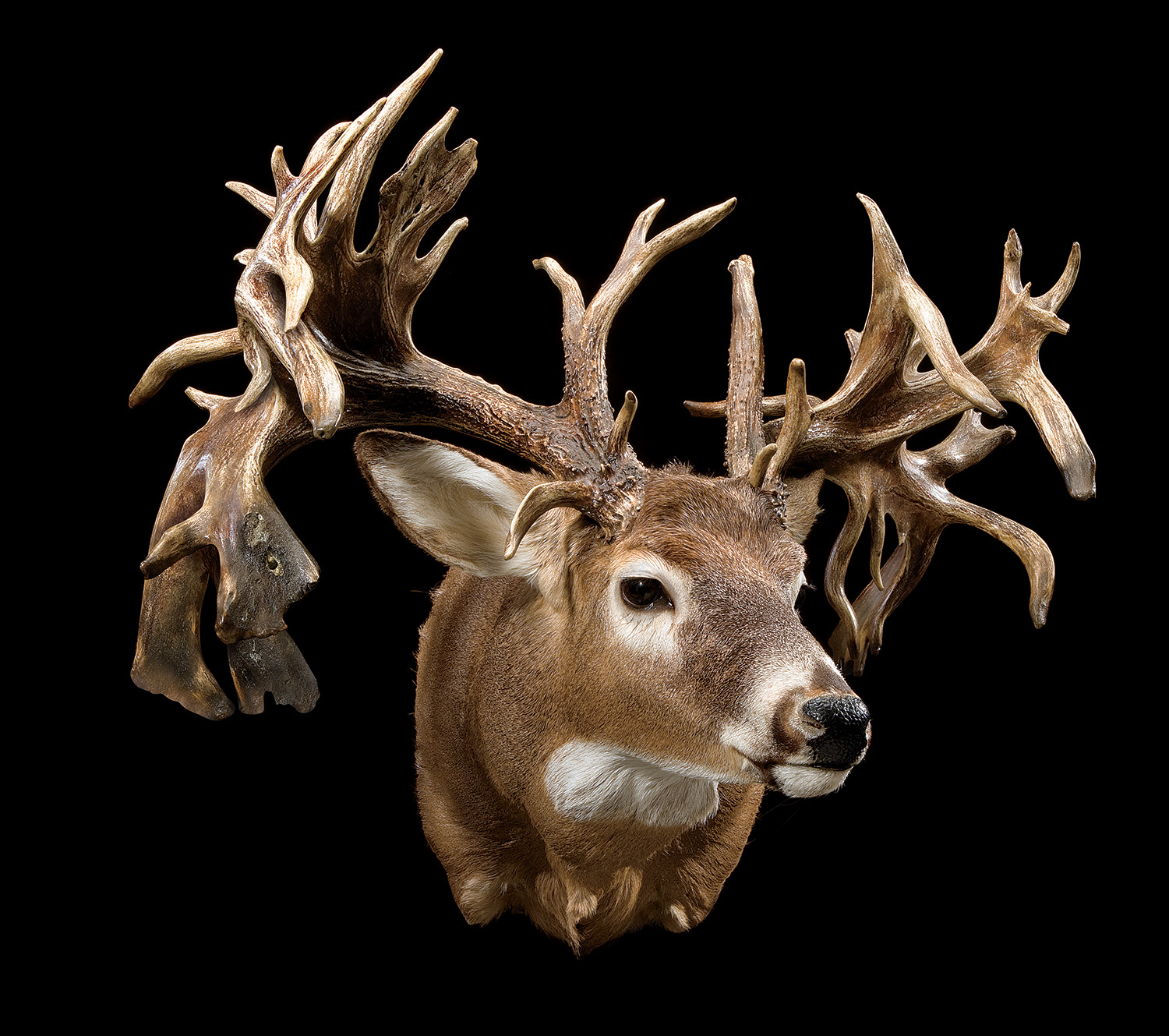
Score: 328-2/8
Location: Portage County, Ohio
Year: 1940
Big antlers bring big drama. The second-largest whitetail ever entered into the Boone and Crockett Records is proof of that. The drama started when antler collector Dick Idol received a tip from another collector that there was a medusa-like whitetail of epic proportions hanging in the Kent Canadian Club in Kent, Ohio. Wasting no time, Idol examined the deer, thought it might be a new world record, and made a deal to buy the buck from the private hunting club in 1983. Idol named it the “Hole in the Horn Buck,” but more on that in a bit.
The backstory on this buck is less dramatic than its afterlife. In 1940, railroad workers stumbled upon the carcass, which was stuck under a chain-link fence. They assumed a train hit the deer, and a local taxidermist provided a shoulder mount. It hung watch over patrons at the Kent Canadian Club until Idol bought it.
Idol had Boone and Crockett Club Official Measurer Phil Wright run a tape over the antlers. After what must have seemed like hours (because it likely did take that long to measure 45 points), Wright tallied a net score of 342-3/8 points—more than eight inches over the Missouri Monarch. With this initial measurement, Idol declared the buck the greatest of all time. He was the publisher of North American Whitetail magazine, and on the cover of the December 1983 issue, he ran a photo of the buck with the words “World Record Shattered!!!” across the page.
If you follow antler records, you know the difference between an entry measurement and a Final Awards Judges’ measurement, conducted by a panel of Boone and Crockett measurers. If those judges agreed with the original score, the buck would have shattered the previous record. However, the panel of judges did not agree with the final score. The panel score was lower, and the buck took the number two spot. The difference of opinion was a matter of interpretation. “The slightly lower score,” according to the records, “…is explained by the necessary interpretation of several points on the beam as being either typical or nontypical.”
As for that mysterious namesake hole in the antlers, writer Gordon Whittington investigated the origins of that hole for a 2015 article in North American Whitetail. One eyewitness to the buck’s recovery in 1940 stated that a piece of wire fence was sticking through the hole. But alas, another eyewitness to this holiest of holes claimed to know the true origin story. A bartender at the Kent Canadian Club said the club manager was annoyed that the mount was always crooked because it was attached to some lattice. With a quarter-inch drill bit, the manager drilled a hole right through the antlers, pushed a wire through, and straightened that buck. Today, Bass Pro Shops is the owner of this magnificent beast, and they do not hang it by a wire through its antlers.
